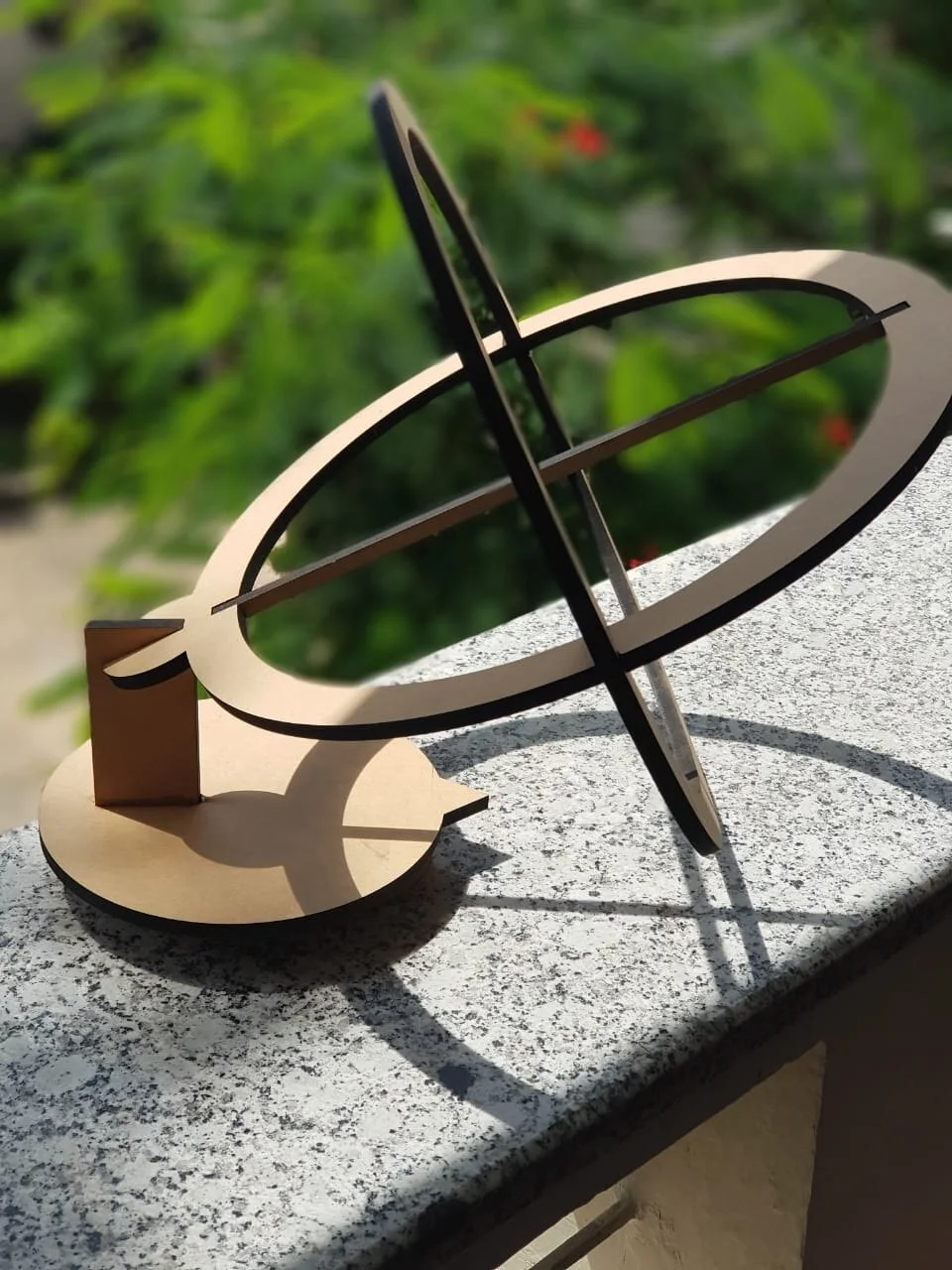Shadows of Time
Shadows of Time - a sculpture based on #light and #shadow to pursue 'Time' as a physical form.
It’s a contemporary Sunclock installed in the foreground of a old monument called ‘Bara Lao Ka Gumbad’ attributed to the ruler of Lodhi Dynasty named Sikandar Lodhi. The ‘Bara lao ka gumbad’ traces its history back to the 14th century when the Tughalqs had built its adjoining area as a garden, making it one of the oldest gardens of Delhi. The sculpture is a metaphor for #timelessness seen in the monument and is designed specifically according to the location.
Ps- the time in your watch right now, it's not correct but systemized.
Commissioned by Delhi Development Authority for Vasant Udyan Park, New Delhi.
The angles are kept according to the longitude and altitude of the place.
The Sculpture has no pedestal or fencing to let people interact with it physically too.
Brief Description -
Sun dial is a device that measures time by the position of the sun. By observing the shadow of the Gnomon cast on surface nearest to ground. The depicted by reading shadow is solar local time of Delhi and not the time of our watches, as we are placed at a longitude of 77.25 degrees east whereas the time in our watch is IST( Indian standard time) which is time located at longitude of 82.5 degrees east(Near Mirzapur, Allahabad). To get the exact time as per watch one has to add the time as given in the table for that particular day.
The sun casts a shadow on a opaque object. In the morning the shadow is cast in the west and in the afternoon it is in the east as sun travels from east to west. At noon the sun is the south and the shadow is cast in the north, representing the local noon time of the place. Using this and by the following the shadow from sunrise to sunset,we can calibrate the positions where the shadow falls to tell time. The shadow is cast by the slanting pipe called Gnomon. It point towards the Pole star thereby aligning the object parallel to the earth axis. As the Sun’s position changes throughout the day, the respective shadow cast on the dial when read with number markings on the ring touching the ground, the local time be determined. Use the sundial when sky is clear with sunshine and shadow of Gnomon is sharp.Observe the Shadow of Gnomon on the sundial marking on the ring. Note the time on sundial. This is the local solar time of your location on earth.To get IST or the time shown in our watches,use the table given below and add the correction time for the current date.
When you check the time on sundial and compare it with the time shown by your watch, You will find a difference. This is due to motion of the sun which is slightly erratic as earth’s orbit is not circular but elliptical. To get correct time from sundial we have to use table called ‘EQUATION OF TIME’. It tells how many minutes one has to add to get the mean sun time( local time of the place and not the IST ). Once local time of Delhi is ascertained add 21 minutes to get to IST. To make matters simple the table is made in such a way that the correction for IST for Delhi is already included. So one has to add the time in the table to the time shown by the sundial to find IST.





